Navigation
-
Badge History
- Eagle Scout Medals
- Eagle Scout Badges
- Eagle Scout Pins
- Eagle Scout Square Knots
- Boy Scout Cloth Rank Badges
- First Class Scoutmaster
- Scouting's First Ranger Award
- Did You Know?
- Square Knot Evolution
- Cub Scout Badges
- Cub Scout Uniform
- Den Mother History and Badges
- Silver Outranks Gold
- National and Private Issue Venturing Badges
- Scout Leader Pins
- Die Cut Rank Badges
- Commissioner Badges
-
Other Links
-
References
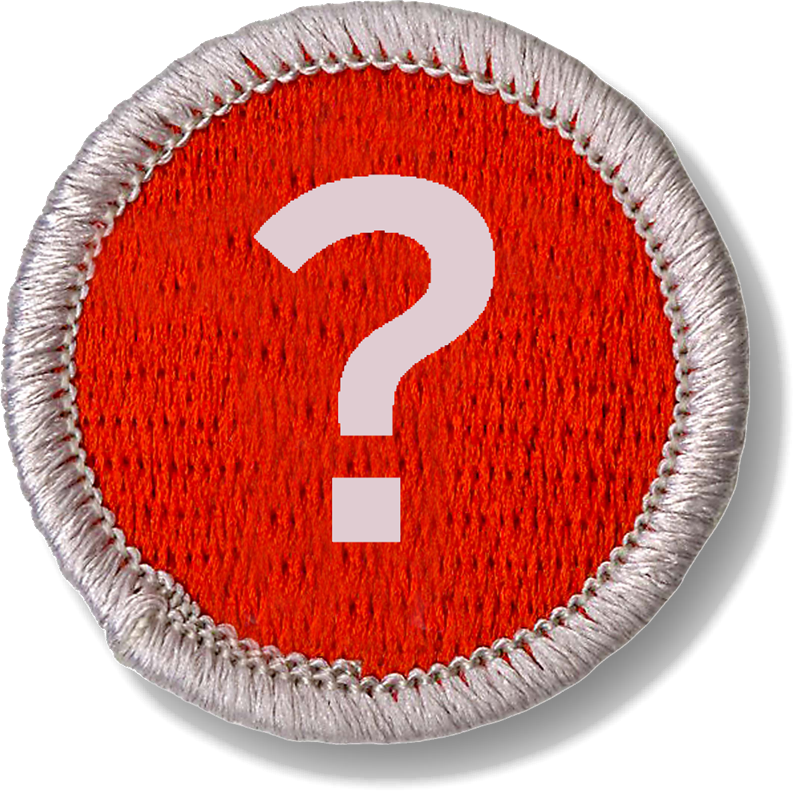 Did You Know?
Did You Know?
The core program of scouting has remained the same since scouting began in 1910 in the United States. However, there have been a number of interesting changes over the years.
Did you know at one time:
- Life Scout Was Earned Before Star Scout
- Adults Could Earn The Rank of Eagle Scout
- The Number of Merit Badges Needed for Eagle Scout Was 24
- The Number of Green Bars of Yesteryear Signified Different Positions Than Today
- Patrol Leaders Had Silver Rank Badges
- Background Color on Service Stars Denoted Years of Service
- Brass Belt Loops Were Used in Advancement
- Patrol Identification Was By Colored Ribbons
For a good resource on "Traditional Scouting: Boy Scout Activities B-P Traditional Scouting Scouts Resources," visit www.inquiry.net.
Life Scout was Earned Before Star Scout
When scouting began in the United States, there were three class of scouts: Tenderfoot, Second Class and First Class. When a boy became First Class he could work on and qualify for merit badges. These badges were intended to stimulate the boy's interest in the life about him and were given for general knowledge.
First Class scouts who earned the following five merit badges: First Aid, Athletics, Life-saving, Personal Health, and Public Health were entitled to wear the Life Scout badge.
You will notice that all the five merit badges for Life Scout centered around health and fitness. The heart of the Life Scout badge was a fitting symbol for these badges.
The Star Scout badge was given to the First Class scout who qualified for ten merit badges including the badges under Life Scout. The star, a symbol on our flag, was a fitting symbol for recognizing a boy who had achieved a higher level of recognition.
The order of Life before Star remained until 1927. In 1927, scouting organizers realized that to go from Life to Star was reasonably easy since any five additional merit badges were required. So the switch was made to have Star requiring any five merit badges (possibly because the star had five points) come before Life which now would require the five required health and fitness merit badges plus the any five earned as a Star Scout.
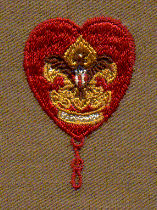
Life Scout
1915-1924
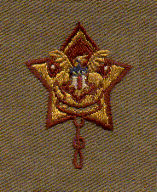
Star Scout
1915-1924
Adults Could Earn The Rank of Eagle Scout
Scouting began in 1910 and included boys in the age group of 12 to 17. In 1949, the age group was changed to 11 to 17. And in 1972 it was again changed to 11 or completed 5th grade.
However, adults could earn rank until the official end in 1965 when BSA added the Eagle requirement of "serve actively for 6 months as a troop warrant officer." This requirement was actually added in a Handbook supplement in 1963 but was optional until 1965.
However, during the late 40's and early 50's the National BSA program began to frown on the idea of an adult scouter earning the Eagle Scout Award. Nevertheless, during the 50's and 60's, whether or not an adult earned the Eagle award largely depended on the individual council's program emphasis. Some councils discouraged adults from earning the award while others encouraged the adults to earn the award believing that an adult who earned the award would be more helpful to the boy and more understanding of what was required to earn the Eagle Scout Award. Terry Grove ~ "A Comprehensive Guide to the Eagle Scout Award"
As said, earning Eagle was discouraged after 1940 but there were a number of service men that were not able to complete Eagle Scout before World War II and did earn their Eagle Scout award after the age of 17. An example of an adult earning Eagle is talked about in a nice dedication website to a father whose son earned his Eagle less than 12 years later.
Until 1914, neither Life or Star were required for Eagle. In fact, eight of the first nine earning Eagle Scouts did not earn Life or Star. And in this first group was an adult.
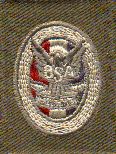
First Eagle Scout Badge
Ric Williams put together a website that lists adult Eagle Scouts: http://www.adulteaglescout.com/" - (archived version of the website)
The Number of Merit Badges Needed for Eagle Scout Was 24
The number of merit badges needed for Eagle Scout was 21 in 1911, the same as today. The number of specifically required merit badges has varied from 5, (1912-1915) to 16 (1952-1965).
It was only during the years 1972 through the beginning of 1979 that 24 were needed.
In 1972, a new scouting program began. BSA removed the Outdoor program from scouting, also removing many of the merit badges that related to the outdoors - this experiment nearly killed the Scouting program).

Personal Health MB
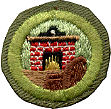
Citizenship in the Home MB
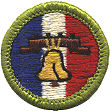
Citizenship in the Nation MB
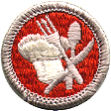
Cooking MB
The history of required merit badges can be viewed at the U.S. Scouting Service Project website.
The Number of Green Bars of Yesteryear Signified Different Positions Than Today
Today, most scouts and scouters are familiar with the position badges that have three full green bars, two and one half green bars and two green bars behind a First Class emblem. These are the positions of Senior Patrol Leader (1989-present), Assistant Senior Patrol Leader (1989-present) and Troop Guide (1989-present) respectively. However, the emblems of these positions were originally used by other positions. They were Junior Assistant Scoutmaster (1934-1947), Senior Patrol Leader (1934-1971) and Assistant Senior Patrol Leader (1959-1971) respectively.
Troop Guide became a brand new position in 1989.
The position of Junior Assistant Scoutmaster (JASM) was introduced in 1926. Between 1926 and 1947, three full bars represented the position. (The first class emblem over the bars was introduced in 1934.) In 1948, the position emblem was changed to look more like the Scoutmaster emblem. The JASM border, lettering and eagle at that time was brown or bronze, while the Scoutmaster emblem was silver and the Assistant Scoutmaster emblem was gold.
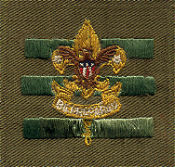
Junior Assistant Scoutmaster
(JASM)
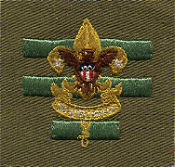
Senior Patrol Leader
(SPL)
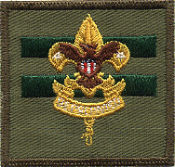
Assistant Senior Patrol Leader
(ASPL)
The Senior Patrol Leader position badge was established in 1915. Between 1915 and 1971, two and one half bars represented the position. In 1972, the position emblem was changed to three full bars behind a Tenderfoot emblem. The bars were changed from green to gray/silver.
Assistant Senior Patrol Leader was created as a position in the last months of 1959. In 1972, the position emblem was changed to two and one half bars behind a Tenderfoot emblem. The bars were changed from green to gold.
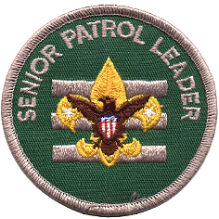
Senior Patrol Leader
(SPL)
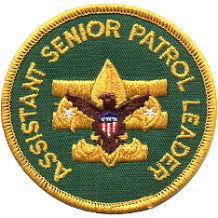
Assistant Senior Patrol Leader
(ASPL)
Patrol Leaders Had Silver Rank Badges
When a scout became a patrol leader, he was entitled to wear a silver Tenderfoot, Second Class, or First Class scout badge according to his rank. All others wore a gold colored badge similar to today's badges and pins. Even with the silver badge, scouts were given patrol leader and assistant patrol leader green bar cloth badges beginning in 1914 and senior patrol leader in 1915. Between 1910 and 1914, patrol leaders and assistant patrol leaders wore white bars. The silver ranks were discontinued after 1925.
Because Life, Star and Eagle scout were considered honors, they were not issued in different colors. In the early years, once a scout earned First Class, he would continue to wear it on his sleeve even after earning the higher honors.
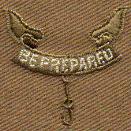
Second Class - Patrol Leader
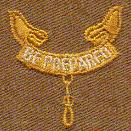
Second Class - everyone else
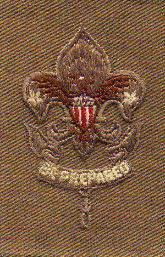
First Class - Patrol Leader
Background Color on Service Stars Denoted Years of Service
Service stars were introduced in 1923. When introduced, they had no numbers on them. It was the background color that determined years of service until the change in 1946 when the background color indicated program. The backs were felt, not plastic like today's. The following color combinations were used:
![]()
1 Year
![]()
5 Year
![]()
10 Year
| Years | Star Color and Background | Time frame |
|---|---|---|
| 1 | Gold star - Green background | 1923-1946 |
| 3 | Gold star - Gray background | 1932-1936 |
| 5 | Silver star - Red background | 1923-1931 |
| 5 | Gold star - Red background | 1932-1946 |
| 10 | Gold star - Purple background | 1932-1946 |
Service strips were used before service stars from 1913 until 1924. They were worn on the right sleeve. Wide stripes were used until 1920 when narrow stripes were introduced. A green service strip for 1 year, a red strip for 3 years and beginning in 1921, a gold strip for 5 years.
Brass Belt Loops Were Used in Advancement
Skill awards, brass belt loops with painted designs, were a part of the advancement program for Tenderfoot through First Class from 1972 until 1989. Today like in the past, camping, for example, is part of Tenderfoot, Second Class and First Class. During the time of the skill awards, a skill award was completed as a requirement or as an elective for a certain rank. Once completed for the specific rank, you did not have to deal with the subject area again.
There were 12 skill awards. They were: Camping, Citizenship, Communications, Community Living, Conservation, Cooking, Environment, Family Living, First Aid, Hiking, Physical Fitness and Swimming.
To complete Tenderfoot, a scout had to complete the Citizenship skill award and any other. To complete Second Class, a scout had to complete the Hiking and First Aid skill awards and any other for a total of 5. To complete First Class, a scout had to complete the Camping and Cooking skill awards and any other for a total of 8.

Camping

Citizenship

Communications

Community Living

Conservation

Cooking

Environment

Family Living

First Aid

Hiking

Physical Fitness

Swimming
For those who collect variations, the earliest First Aid skill awards had a red cross. The later ones had a green cross.

First Aid
(with a red cross)
Patrol Identification Was By Colored Ribbons
From the beginning of scouting until 1929, patrols could wear a pair of colored ribbons on their right shoulder to denote a specific patrol. Patrol emblems were authorized in 1921 to replace patrol ribbons, but were not officially produced until 1926. The patrol colors can be referenced below.
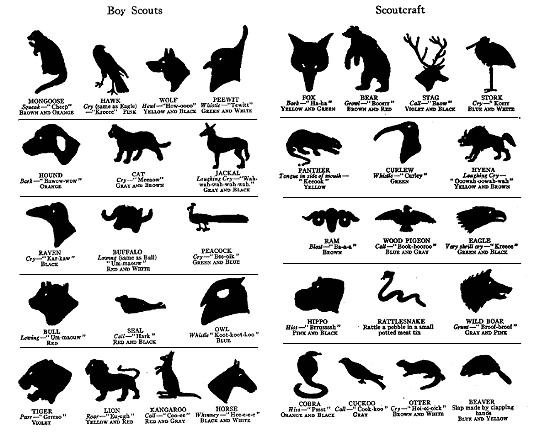
| Patrol Name | Colors |
|---|---|
| Mongoose | Brown/Orange |
| Hawk | Pink |
| Wolf | Yellow/Black |
| Peewit | Green/White |
| Hound | Orange |
| Cat | Gray/Brown |
| Jackal | Gray/Black |
| Raven | Black |
| Buffalo | Red/White |
| Peacock | Green/Blue |
| Bull | Red |
| Seal | Red/Black |
| Owl | Blue |
| Tiger | Violet |
| Lion | Yellow/Red |
| Kangaroo | Red/Gray |
| Horse | Black/White |
| Patrol Name | Colors |
|---|---|
| Fox | Yellow/Green |
| Bear | Brown/Red |
| Stag | Violet/Black |
| Stork | Blue/White |
| Panther | Yellow |
| Curlew | Green |
| Hyena | Yellow/Brown |
| Ram | Brown |
| Wood Pigeon | Blue/Gray |
| Eagle | Green/Black |
| Hippo | Pink/Black |
| Rattlesnake | White/Pink |
| Wild Boar | Gray/Pink |
| Cobra | Orange/Black |
| Cuckoo | Gray |
| Otter | Brown/White |
| Beaver | Blue/Yellow |
The colored ribbons were reintroduced in the Webelos program in 1967.
The colors for the Webelos program were red, gold and green representing, at that time, Exploring, Cub Scouts, and Boy Scouts respectively. They were worn at the top of the right shoulder seem as in the beginning years of scouting. Since 1989, there have been a number of changes in Cub Scout uniforming and the Webelos colors have lost their significance.
Additional information and colors can be found at:
www.gilwell.com/patrolPatch/ribbons.htm
Credits:
- Rank badges and pins scanned from Ron Vinatieri's collection.